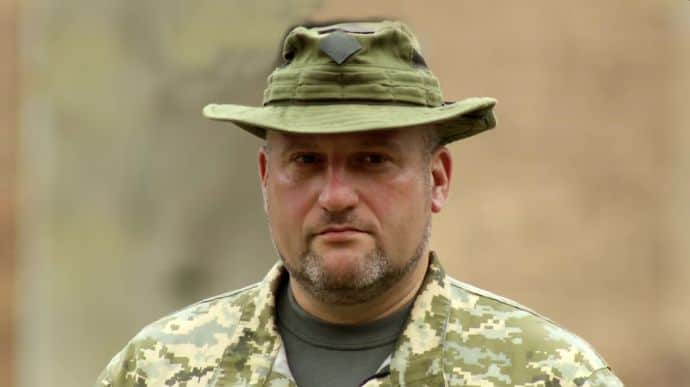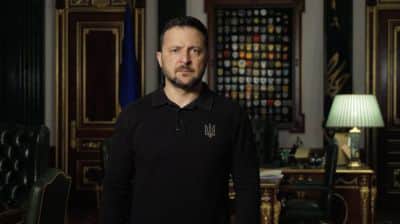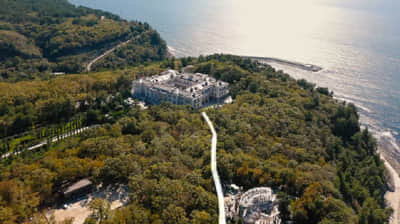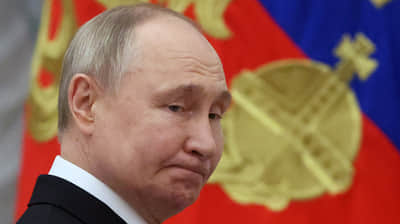1,500 defenders stood against more than 20,000 Russians in Ukraine's south when invasion began in 2022

At the beginning of Russia's full-scale invasion of Ukraine, there were about 1,500 military personnel to defend the country's south, mostly in Kherson Oblast, while the Russians had up to 20,000 people and a 20-fold advantage in equipment.
Source: Major General Andrii Sokolov, who at the beginning of the invasion was Deputy Commander of the Operational Command Pivden (South) and was in charge of the Pivden grouping of troops, in an interview with Ukrainska Pravda
Quote: "The Pivden grouping of troops was founded on a rotational basis. That is, some people came to be replaced by other people later. If we consider the total number of combat combined arms units, at the time of the invasion there were about 1,500 people.
In particular, the 59th Brigade had approximately 1,300 personnel. Why so few? Because the brigade had just left the Joint Forces Operation zone in December and was restoring its combat capability. The recovery process had not yet been completed when they were assigned to our group. They were moved to the Oleshky Sands training field. The staffing of this brigade was about 60%.
The artillery unit was incomplete, because two divisions were training in Divychky [a training ground in Kyiv Oblast – ed.], and the engineering support group, the sappers, was also training in Kamianets-Podilskyi.
Plus, there were about 250 people in the 137th Marine Battalion, which was also 50% staffed. And out of these 250 people, some were conscripts who were engaged in stabilisation operations on the border with Crimea."
Details: Sokolov explained that the stabilisation efforts involved people stretched over a stretch of up to 200 kilometres with observation posts along the entire border, monitoring Russian activity to ensure that there was no illegal crossing.
Sokolov said that about one platoon (15-45 people) was at the stronghold in front of the Chonhar bridge; another platoon was at the Kalanchak checkpoint, and another platoon stronghold was near the village of Kairy – the Chaplynka checkpoint, opposite the Titan plant.
In fact, only three strongholds opposed the Russians on the first day of the full-scale war.
Quote: "Of course, this was not enough even for a stabilisation operation.
During the escalation, it was planned to have up to two brigades: one on the Kherson front (it had to perform tasks and conduct stabilisation operations), and one on the Melitopol front. And one battalion, which as an advanced unit stood directly on the border. But I did not even have these forces, I had only one brigade.
There were no forces at all on the Melitopol front. I sent my reserve, a tank company, there to cover it somehow."
Details: Sokolov said that he reported on the lack of forces to Serhii Naiev, the commander of the Joint Forces. In his opinion, there was no reinforcement in the south because there were not enough assets and personnel, as the Russians had concentrated their troops in a large area from Belarus to Crimea.
1,500 people were the grouping for stabilisation operations.
If the Russians had acted with sabotage groups and illegal formations, if the situation had developed as in the east in 2014, then there would have been two brigades.
"There was also a separate plan for defence. There should have been four brigades: two mechanised or combined arms brigades and two territorial defence brigades. Imagine four brigades in the plan and one brigade in reality. This is certainly not enough," Sokolov said.
There were supposed to be 2 brigades of the Territorial Defence Forces, Kherson and Zaporizhzhia, but they had not even been assembled at the beginning of the war. Sokolov received the Zaporizhzhia 110th Brigade of the Ukrainian Territorial Defence Forces under his command at the end of the day on 24 February 2022, while the Kherson Brigade was never put at his disposal because it had not been assembled.
On 23 February, Sokolov received an order from his superiors to move out as a brigade and take up defensive positions, and he ordered it to leave the training ground near Oleshky [Kherson Oblast], but the defenders did not have enough time to take up defensive positions. There were no prepared positions on the lines where they were supposed to go.
"The positions occupied by the 137th Battalion immediately on the border with Crimea were equipped, and we have been improving them constantly (since 2014 – ed.). But the defensive positions in the depths were practically only on paper," Sokolov explained.
Quote: "I received a report from the commander of the 137th Battalion that the enemy had started moving their motorised convoys in our direction across the border (on 24 February). Accordingly, I ordered that they act according to the withdrawal plan. Those who did not receive the command acted independently. It was planned and discussed in advance...
The 59th Brigade, unfortunately, was never able to reach its defensive lines: it did not have time, there was not enough time. They actually met the war within the 241st training ground in Oleshky.
When I realised that they would not have time to reach their defensive lines because the enemy was already actively advancing, I ordered that they switch to defence where they were. This was partially fulfilled, but under the enemy's pressure, the brigade began to retreat to the right bank of the Dnipro River."
Details: According to the Major General, approximately 25 battalion tactical groups of Russian invaders (about 20,000 soldiers) were advancing in the south. This force also included a command and control system and "more massive units with artillery, air defence systems, intelligence, engineering and electronic warfare units".
The 22nd Army Brigade in its entirety, at least a division of the 58th North Caucasian Army, which comprised the most prepared troops, and about half of the 7th Air Assault Division, were acting against the defenders of Ukraine in that area. The enemy forces also included artillery, up to 140 planes and 60 helicopters, and the Russian Black Sea Fleet's naval warehouse.
Sokolov added that the enemy had a complete advantage in both personnel and equipment. In addition, Ukrainian air defence did not show any signs of life on the first day, so the Russian invaders had complete air superiority in the south.
Ukrainska Pravda is the place where you will find the most up-to-date information about everything related to the war in Ukraine. Follow us on Twitter, support us, or become our patron!







